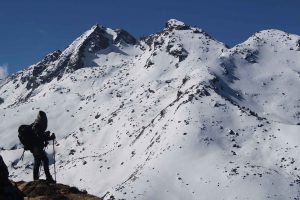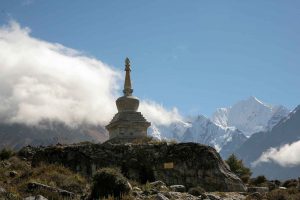The Langtang Valley is one of the most well-liked trekking destinations in Nepal since it provides the ideal fusion of magnificent natural beauty and cultural experiences. A wide variety of landscapes can be seen along the trek, including breathtaking views of the Himalayan mountain range, magnificent woods, rivers, and valleys. As the trail passes by several traditional Nepalese villages, hikers can interact with the locals, learn about their customs and traditions, and experience their way of life. The trek’s moderate difficulty and easy accessibility make it easy for both beginner and seasoned trekkers to undertake. Before jumping into the tips for Langtang Valley Trekking, I would like to answer certain common queries which you might be curious to know.
Is Langtang Valley Trek worth it?
The straight answer is YES.
Of course, you are reading this blog because you are interested in doing Langtang Trek. Yet, for those who are still confused, I want to provide clarity through this blog section.
Taking into consideration the number of days required for the Langtang Valley trek and cost of the trek, the value you will be getting is beyond. The trek offers everything similar to mainstream Everest and Annapurna Treks in its unique way. It’s worth it for the diverse range of landscape views and unique cultural experience it offers.
Breathtaking scenery
The Langtang Valley offers stunning views of the Himalayan peaks, including Langtang Lirung, Gang Chhenpo, and Dorje Lakpa. You will get to see a diverse range of scenery and landscapes passing through beautiful forests, rivers, and valleys.
Cultural experience
The Langtang Valley trek takes you through many traditional Nepalese villages, offering you with a unique cultural experience. You can interact with local people, learn about their customs and traditions, and experience their way of life.
With more than 80% population, people of Tamang ethnicity dominate the Langtang region. There are over 120 sub-clans within this ethnic group. Having their distinct language, costume, festivals, and more, Tamangs are rich and unique in culture and tradition. Damphu is their traditional musical instrument and is used to play their traditional songs which are called Tamang Cello songs. They mainly follow Buddhism being 80% of the Tamangs Buddhist. And their language, Tamang is similar to the language of Gurung (a major ethnic group of the Annapurna region).
Off-the-beaten-path
The trail is less congested than other popular trekking routes in Nepal. As a result, it provides you with the opportunity to explore a more remote and pristine region of the Himalayas.
How long is the Langtang trek?
The typical Langtang Trek trail up to Kyanjin Ri covers a length of 77 km (48 miles). It can take 8-9 days to complete the trek (5-7 days of trekking and 2 days of bus ride). If you trek up to Tserko Ri, your trek length increases by around 8 km. Likewise, if you combine the trek with Tamang Heritage Trail, it’ll take you 3 more days to complete the trek.
How difficult is the Langtang Valley trek?
In comparison to other treks of Nepal, the Langtang Valley Trek is moderately easy and short. So, the trek is possible for people of all age groups, either beginner or experienced trekkers. The trekking trails are gradually steep so even a beginner can walk easily and comfortably.
However, do not take this lightly. Though it’s an easier trek compared to treks like Everest Base Camp and Annapurna Circuit, it is still somewhat challenging. Nepal generally has difficult terrains and the Langtang trek to involves several long and steep ascents right from the start of the trek. But this is the beauty of trekking in Nepal, the toughness and adventure it offers. So, all you need for a successful Langtang trek is some physical and mental preparation along with a positive attitude.
Essential Tips for a successful Langtang Valley trekking
Prepare well in advance
Though trekking in the Langtang Valley is moderately easy, it still requires a certain level of fitness and preparation. It’s important to train your body by doing regular exercises, such as hiking or jogging, in the weeks leading up to the trek.
Pack appropriately
It’s essential to pack the right gear and equipment for the trek. Bring warm clothes, a waterproof jacket, sturdy hiking boots, a first aid kit, and a water purification system. Since this is a short trek, you don’t need to pack much. You need not bring a sleeping bag as the teahouses in the Langtang region are well facilitated with blankets. Even if it gets too cold, you can wear your down jacket to sleep. Remember to pack light and only bring what you need. Your backpack should be less than 14 kg and no bigger than 50 L.
Here is a list of packing essentials for the Langtang Valley trek:
- Trekking Boots
- Down jacket
- T-shirts
- Regular socks (2-3 pairs)
- Warm woolen socks (1 pair)
- Trekking trousers
- Trekking shorts
- T-shirts (2 pairs)
- Gloves
- Sunglasses
- Thermal inners
- Water bottle
- Water purifier
- Hat/Cap
- Sunscreen
- Sandals
- First aid kit
- Trekking poles
- Camera
- Power bank
- Headtorch
- First aid kit
Acclimatize properly
Though the possibility of altitude sickness is minimal, it is still a possible concern for trekkers on the Langtang Valley Trek. It’s important to take your time and acclimatize properly by spending a few days at lower altitudes before ascending to higher altitudes. This is one of the most important tips for trekking in the Langtang Valley.
Remain hydrated
Dehydration is another common concern on the trek, particularly at higher altitudes. Drink a lot of water, and carry a water purification system to make sure the water you’re consuming is pure. Enough water consumption will also aid in preventing altitude sickness.
Respect the environment
The Langtang Valley is among the regions that still have an excellent natural ecosystem. It needs to be respected and preserved. Avoid littering or causing environmental harm by following the Leave No Trace principles.
Be mindful of cultural differences
The Langtang Valley passes through many traditional Nepalese villages, so it’s important to be aware of local customs and respect local traditions. Thus, dress modestly and be mindful of cultural differences.
Hire a reputable guide and porter
Hiring a reputable guide and porter can make a significant difference in your Langtang Valley trekking experience. They can provide valuable information about the terrain, culture, and environment, as well as help you carry your gear and navigate the route.
Hike to Tserko Ri for the best experience
During the Langtang Valley trek, you can hike up either up to Kyanjin Ri or further to Tserko Ri. It is highly suggested that you trek up to Tserko Ri which is at an elevation of over 5,000 m. The panoramic views from Tserko Ri will spellbind you.
Buy an NTC sim
Internet in teahouses can cost you up to $4. It’s better to buy an NTC sim after arriving in Kathmandu. The network works in most spots though the signals are likely to be weak after Lama Hotel.
Bring enough cash
Since it is a remote region, you won’t find ATMs during the trek. So, remember to carry enough cash to avoid any kind of inconvenience.
By following these essential tips for Langtang Valley trekking, you can ensure a safe and enjoyable journey through one of the most beautiful regions in Nepal. Remember to take your time, enjoy the stunning scenery, and embrace the challenges of the trek.




